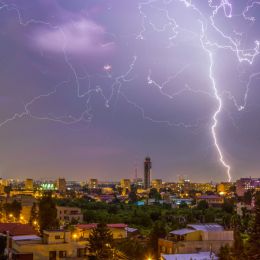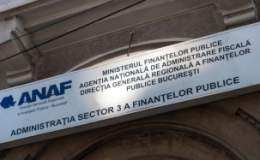Analysts estimate BNR will leave small sums to banks starting with May, as the long-term financing resources are reduced.
“We are talking about 500 million euros,” financial consultant Bogdan Baltazar estimated for NewsIn.
Most of the deposits attracted by banks mature in thee months and financing granted by mother banks to local subsidiaries last for a year, or two, chief economist of the second bank by assets and network BRD SocGen, Florian Libocor said.
“The central lender’s gesture is symbolic and the impact will be too,” Libocor said.
However, as time will pass banks will try to re-mature short-term resources into medium-term ones and then into long-term liabilities, most analysts estimate.
“The immediate effect bears no importance in itself,” chief economist with Raiffeisen Bank, Ionut Dumitru said. BNR is likely to reduce the required reserve ratio forforeign currency-liabilities from the current 40 percent level, but only when the market is ready to sponge this money, he added.
The central bank’s decision today is a first bud of the accord Romania closed with the International Monetary Fund (IMF) and other international lenders over a 20-billion euro loan.
BNR’s decision mirrors a requirement of the IMF, senior economist with ING Bank Romania, Alexandru Chidesciuc said.
However, the effects could be visible in a year or so, chief economist with the largest bank by assets Banca Comerciala Romana, Lucian Anghel, told NewsIn.
Most of the resources will be transferred on the long-term and by 2010 there will be no more issues with paying debts which reached maturity, Anghel said. Rating agencies have been saying the main issue Romania has is the short-term debt and this is about to change from now on, he added.
The central bank’s foreign currency reserve includes 3 billion euros collected from banks in passives maturing in a year and another 3 billion euros are short-term passives. However, how much money stands for passives maturing in more than two years is unknown, Anghel explained.
The central bank’s next monetary policy meeting is scheduled on May 23 when the main interest rate could be trimmed from the current 10 percent per year, analysts mull.
Romania’s image has improved after the recent accord with the IMF and interests on the market seem to be driving to the key rate, even those for one-month deposits, Dumitru said.
Earlier today BNR adopted a first time measure after the agreement with the IMF, slashing minimum mandatory reserves to zero for passives in foreign currency maturing in more than two years.
A cut in reserves, long-awaited and desired in the market, would be offset by the money borrowed from the International Monetary Fund and other international lenders. The first installment of the 20-billion euro loan will arrive in Romania after the accord is approved by the Fund’s board in the upcoming weeks.
The decision to slash the level of required reserve ratip for foreign currency liabilities maturing in more than two years will enter into force starting with May 24- June 23, after the first 5 million euros from the IMF enter the country.
The reserves in foreign currency of lenders are included in Romania’s international reserves managed by the central bank.
The bank’s board also decided to keep tabs on the proper management of liquidities in the banking system.
BNR governor Mugur Isarescu declared on March 26 it would be wise for the central bank to exclude long-term liabilities when calculating reserve requirements. Thus, by modifying the calculus base, the level of the reserves would also be reduced.
“This way we help the long-term financing as well, which will support lending, and we reduce the banks' discomfort of having short-term liabilities,” explained Isarescu.
The reserves of banks stem from deposits of clients and from other types of financing which can be used to grant loans.
Citeste si:
Calculator Salariu: Află câți bani primești în mână în funcție de salariul brut »
Te-ar putea interesa și:


















































































![HR [PLAY] Tech Workout - 11...](https://www.wall-street.ro/image_thumbs/thumbs/973/973fe0a3888d417feff63de42e814180-260x260-00-65.jpg?v=1713939194)









